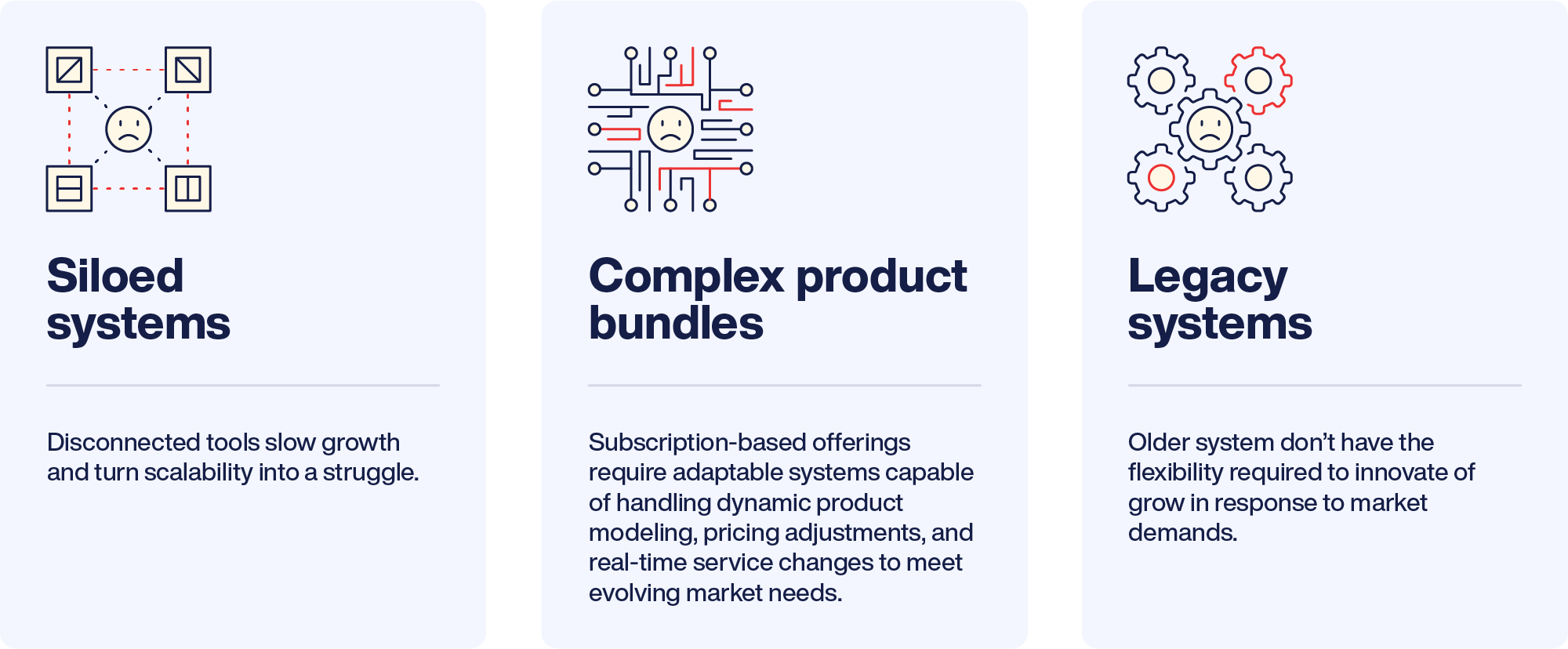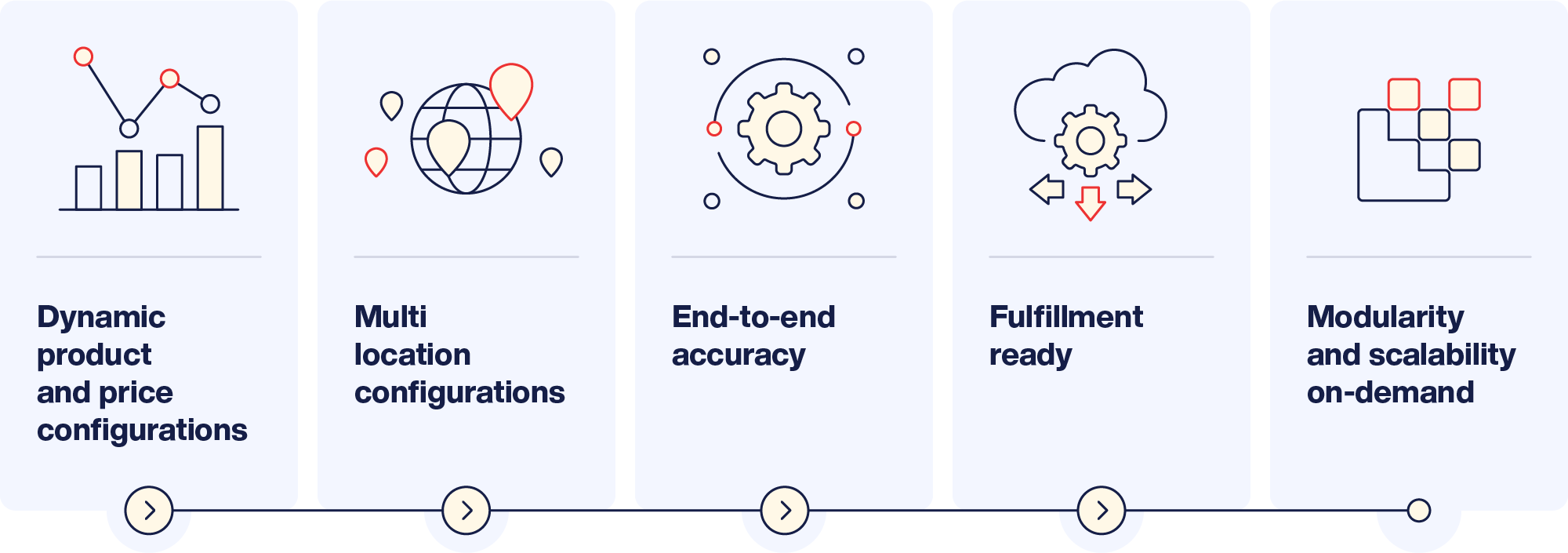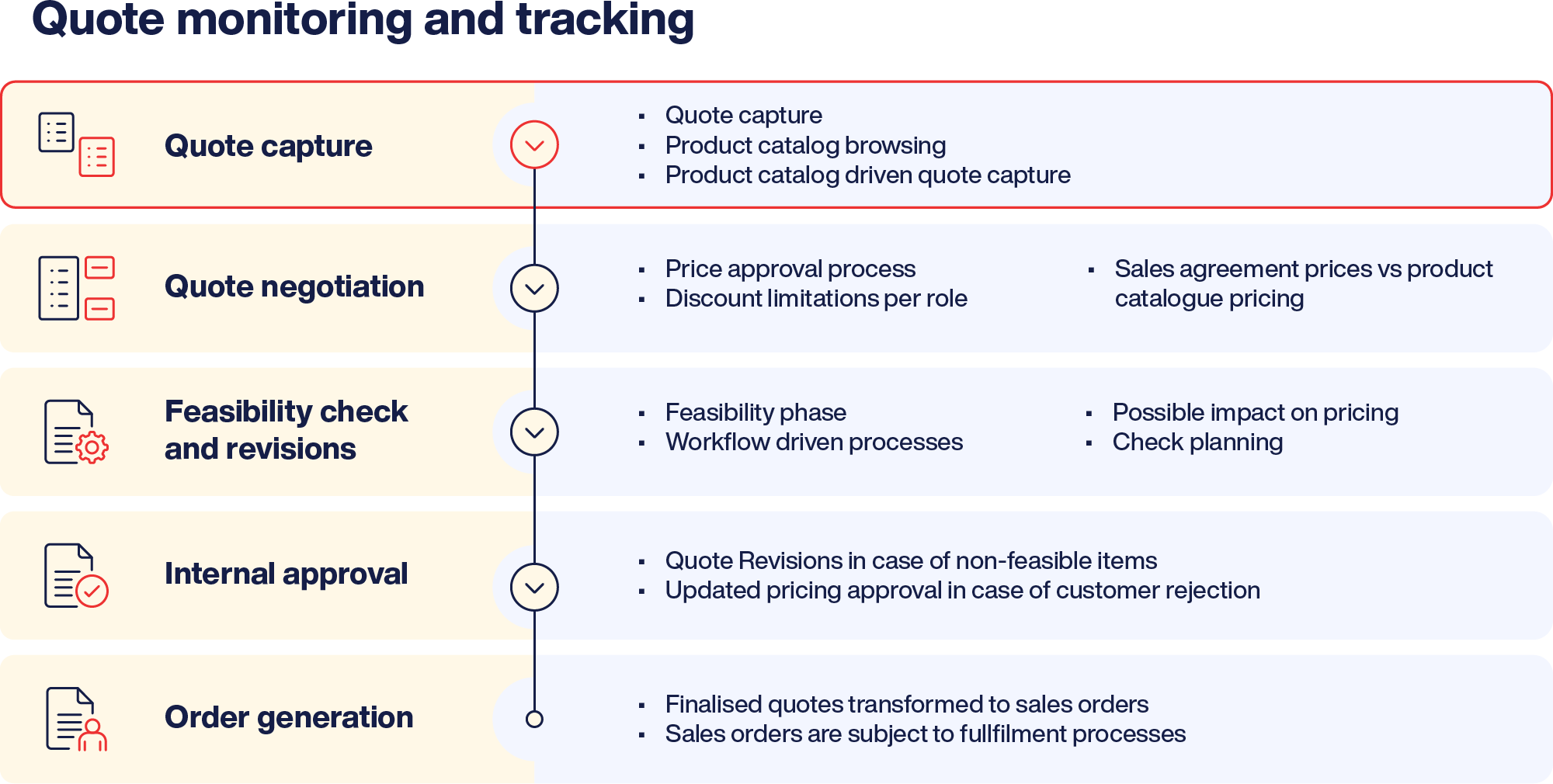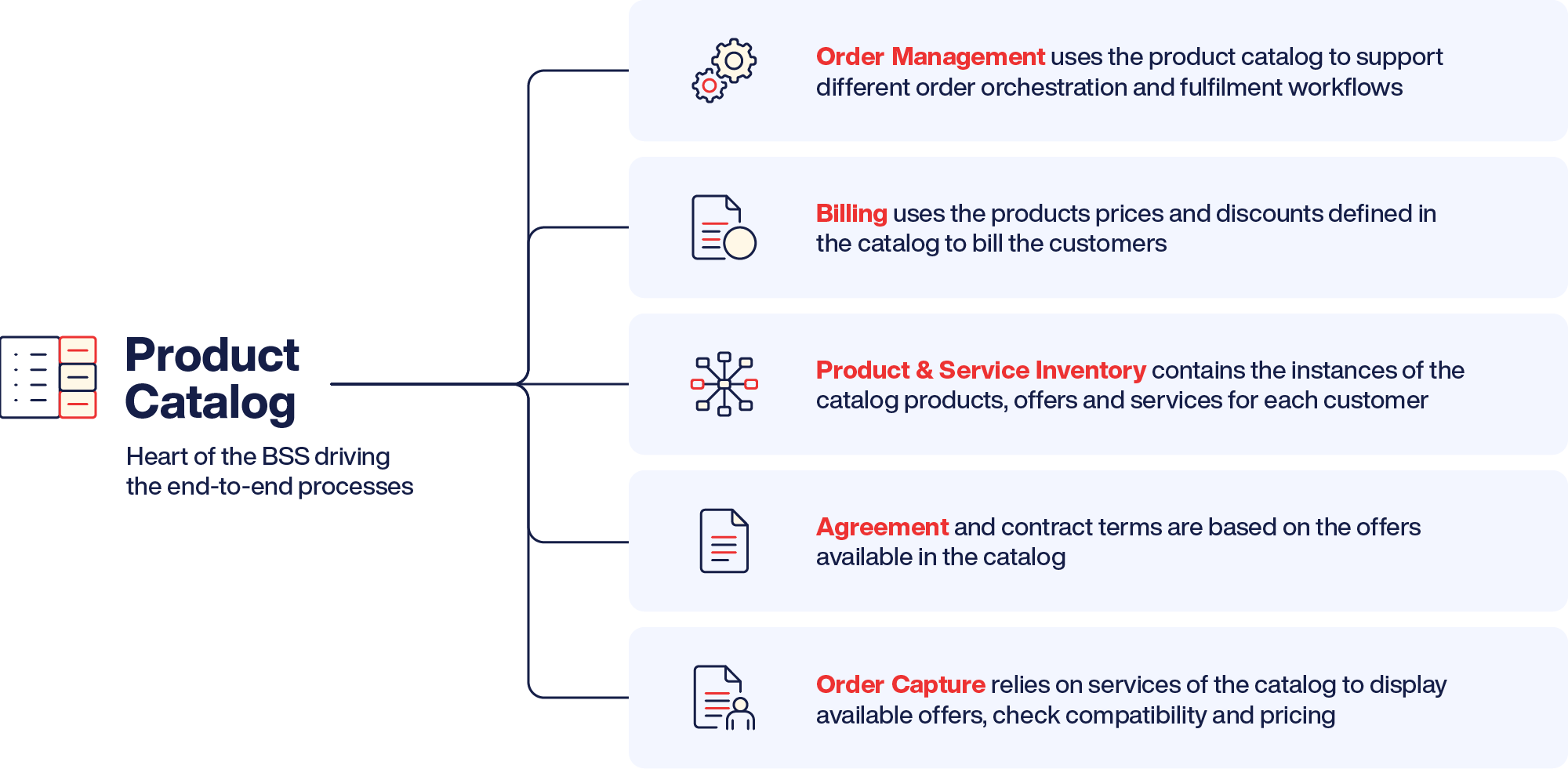

Sync to win. Telecom success is no longer about network strength, but about operational agility. Real-time catalog sync and Open APIs turn quoting from a bottleneck into a growth engine.
The quoting challenge telcos face
Imagine you’re a product owner at a connectivity provider. You’re launching a new fiber plus cloud bundle in a partner ecosystem with wholesale resellers and retail brands. You need to configure the offer, price it, quote it, and activate it fast. But your CPQ tool works off yesterday’s catalog, your partner pricing is scattered, and your downstream order-to-cash stack is inflexible. The result? Weeks of delay, mis-quoted deals and frustrated customers.
Now imagine alternative scenario where one trusted source of product truth, automatically synchronized across channels, rules engines enforcing valid configurations, Open APIs connecting CPQ to your catalog, fulfilment, billing and partner systems, and enables deals to be closed in days, not weeks. That’s the promise of CPQ in the age of Open APIs, and the backbone to making it real is catalog synchronization. In this blog we’ll walk you through why this is crucial, what it means for connectivity providers, and how you can act now, drawing on ZIRA’s experience delivering it.
Why quoting is complex but necessary
From homogeneous offers to multi model portfolios
CSPs are no longer just selling voice and data. They sell portfolios that span connectivity, cloud services, IoT, wholesale access, partner-branded packages and B2B2X deals. That means thousands of product IDs, combinations, partner rules, eligibility, discount models, service-level agreements and fulfilment logic.
Why traditional CPQ tools struggle
Generic CPQ tools, built for simpler domains, struggle with multi-site configurations, usage-based pricing, partner tiers, and regulatory constraints.

The strategic imperative
The quoting system is no longer a nice to have, it's a business accelerator. For connectivity providers, quoting speed, accuracy, and flexibility are a competitive weapon.

Open APIs: The enabler of next-gen CPQ
What Open APIs bring to CPQ
The industry’s shift toward TM Forum’s Open Digital Architecture (ODA) and TM Forum's Open APIs has transformed how systems connect and communicate. These APIs standardize how data flows across product catalogs, quotes, and fulfilment processes, creating a shared language for interoperability. For example the TMF 936 Open Gateway Product Catalog API, defines how catalogs are created, updated, and synchronized across systems. With Open APIs:
- CPQ can pull real-time catalog data (offers, attributes, pricing).
- Rules and eligibility are automatically enforced.
- Quotes flow downstream into order and billing systems without re-entry.
- Partners integrate more easily through a standardized interface.

Why this matters for catalog sync
Without synchronized catalogs, connectivity providers face misquotes, delayed launches, duplicate work, and revenue leakage. Open APIs enable a catalog-sync layer, a single source of truth that feeds CPQ, order management, billing, and partner portals consistently. With its Open API Platinum certification and 27 TM Forum certified APIs, ZIRA has proven its commitment to ecosystem development, helping CSPs implement real-time catalog synchronization and API-driven agility at telecom scale.
Catalog sync: The heartbeat of agile quoting
What “catalog sync” really means
Catalog synchronization ensures consistent product definitions, configurations, pricing, and rules across all systems and channels. CPQ must always “know” the current catalog, so every quote reflects up-to-date, valid information. If Open APIs are the nervous system of digital telecom operations, real-time catalog sync is the heartbeat, keeping every connected process alive and aligned.


Real-time sync removes latency. For example, when a new IoT data plan or partner streaming offer is added, it’s instantly available across CPQ and sales channels, cutting time-to-market from weeks to minutes.
Case scenario
Let’s say an operator launches a new “5G Fixed Wireless + Cloud Bundle” across retail, B2B and wholesale partner channels.
Without catalog sync:
- Each channel defines offers differently → inconsistent quotes.
- Pricing lags behind → margin leakage.
- Partner eligibility rules break → rollout delays.
With catalog sync and Open APIs powered by an integrated ZIRA BSS and ZIRA CPQ architecture:
- The offer is defined once and shared instantly across channels.
- ZIRA CPQ validates configurations automatically based on real-time catalog data.
- Partners quote through the same unified logic.
- Result: Launch in days, not weeks; consistent quotes; seamless fulfilment across the ZIRA BSS stack.

What you should do right now
The journey to an agile future with API driven CPQ architecture requires a strategic shift. Start with these steps:
- Audit your catalog-to-CPQ link. Are product definitions, pricing, and bundles synchronized across systems?
- Check Open API readiness. Ensure CPQ supports TM Forum APIs such as TMF 620 (Product Catalog), TMF 648 (Quote Management), and TMF 936 (Catalog Operations).
- Prioritize real-time catalog sync. Before adding new quoting features, make sure your catalog is clean, unified, and continuously synchronized.
- Engage your partner ecosystem. Use standard APIs to plug in partner quoting and reselling capabilities. Start with a pilot partner to validate performance.
- Measure quoting KPIs. Track time-to-quote, quote-to-order ratio, and error rates. Establish baselines and targets for improvement.
Achieving this agility often starts with the right expertise. Whether you’re assessing your API readiness or building a real-time catalog sync layer, partnering with an experienced provider like ZIRA can accelerate your journey and ensure your CPQ foundation is ready for scale.
Sync to win: The future is catalog-driven and API-native
In a world where CSPs' offers are more complex, competition is faster and partner ecosystems richer, your quoting engine cannot afford to be disconnected, manual or siloed. The future of telecom competition will not be won on network technology alone, but on operational agility.
The ability to configure, price, and quote any service, with any partner, through any channel, at the speed of the market is the new battlefield. By harnessing the power of Open APIs and making real-time catalog synchronization the heartbeat of your operations, you can replace the anchor that holds you back with an engine that propels you forward.
The question is no longer if you will make this shift, but how fast. Are you quoting at the speed your market demands, or still trapped by yesterday’s tools?



